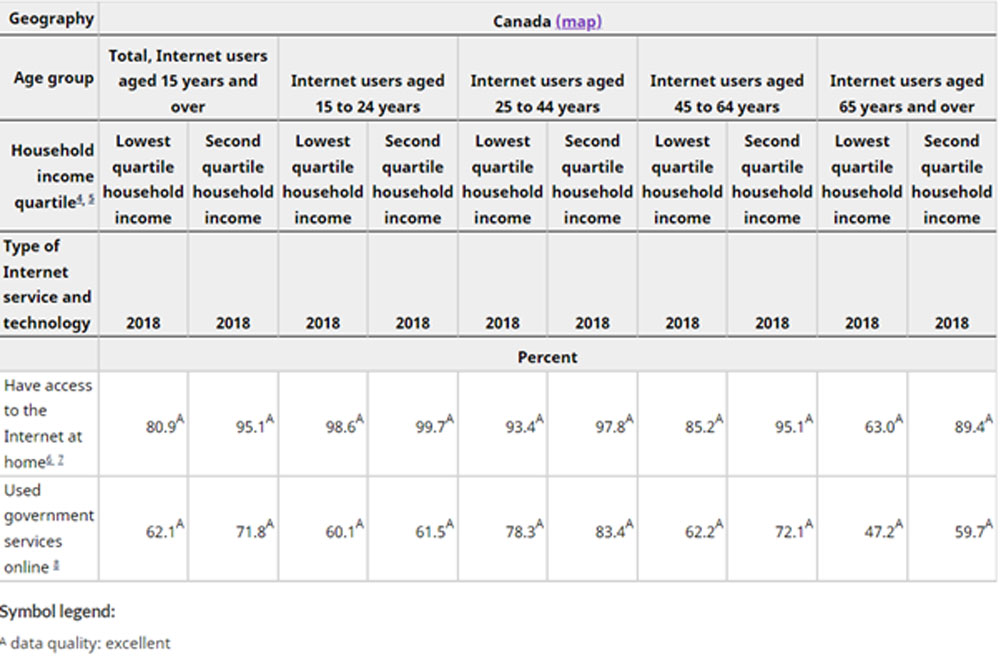Introduction
By now, it’s well understood that broadband is an essential service for all Canadians. As far back as 2017, the Canadian Radio-Television and Telecommunications Commission (CRTC) acknowledged in their Communications Monitoring Report how reliant we have become on internet communications in order to create meaningful content, contribute to Canada’s economy and democracy, and to connect with our friends, families, and communities. But, the broadband landscape across the nation is anything but uniform. Just how well has the country performed in its quest to overcome the ‘availability gap,’ i.e., the vast digital divide between the urban and rural areas? In this post, we will discuss how the internet has become an integral part of Canada’s socio-economic infrastructure. Moreover, we will learn about the digital divide and the actions we intend to take to overcome the ever-growing challenge. Let’s get started!
The ‘Digital Divide’ across Canada’s remote areas
The CRTC declared broadband internet to be a basic necessity for all Canadians in 2016. Since then, the Government of Canada and Provincial governments have launched nationwide and regional programs to facilitate the development and expansion of high-speed broadband internet access for unserved and underserved areas. To enable functionality such as standard definition video streaming, real-time gameplay, access to services such as banking, telemedicine and music downloads, the CRTC specified minimum speeds of 50 Mbps for download and 10 Mbps for upload with a provision for unlimited data plans across all homes, businesses, and major traffic routes.
However, many remote and rural communities remain vastly underserved. The more recent study by the CRTC analyzed the broadband coverage map to report the following data:

Clearly, broadband internet availability and performance across rural areas is weaker than areas with greater population densities. This persistent rural-urban divide is disappointing particularly in a country as developed and advanced as Canada. The report claims that more than two-thirds of the on-reserve homes are void of high-speed internet. In the North, less than fifty percent of the Nunavut households have download speeds of 5 Mbps!
As a result, the country’s rural areas suffered disastrous effects. Many indigenous communities find it extremely challenging to improve education, work environment, healthcare, economic development, and other crucial facets of daily life. During COVID-19, a secondary school in northern Ontario resorted to the use of fax machines to carry on with children’s education as reliable internet was simply not available. Things worsened as indigenous communities were compelled to distance themselves during the pandemic. The lack of reliable internet connectivity made it all the more difficult to stay in touch with loved ones, let alone access essential services, such as remote learning for children
But what causes such a wide availability gap to persist? The Government of Canada and its private partners have prioritized nationwide high-speed internet connectivity. However the parties involved seemly prioritize profitability over duty during the process. The rural areas in Canada do not have large population densities. Most service providers can’t seem to get around the negative return that infrastructure investments across such vast geographic areas with low population densities represent.

Statistics Canada reported that internet access in the country has a relationship with age and household income
Government of Canada’s Intervention and Possible Solutions
The Government of Canada identifies the digital divide as a severe threat to the nation’s development and unity. Therefore, it has launched various programs and initiatives to improve broadband internet coverage across Canada.
- The CRTC, with contributions from larger telecommunications service providers, created a fund of $750 million in 2016 to support internet connectivity projects in rural areas.
- The same year the Government of Canada announced an investment of up to $500 million over five years in order to introduce 300 rural and remote communities to broadband internet services (Connect to Innovate).
- The Strategic Innovation Fund (SIF) of $100 million was announced in Budget 2018 to introduce low-orbit satellites and next-generation rural broadband internet services.
, “High-speed internet is more than just a convenience.” Former Afghan Canadian politician Maryam Monsef.
Indeed, the Government of Canada is introducing schemes and programs to facilitate quick internet coverage in rural areas. But officials should also consider collaborating with the indigenous, rural, and remote communities they intend to help. Community-led initiatives are critical to a programs’ success.
Our Mission

We at, Community Network Partners Inc., see the continuing availability gap is an opportunity to support and empower local Canadians living in rural and remote areas. Our passion for providing advanced technological support across Canada’s remote regions has fuelled our mission to connect and empower communities through active engagement and collaboration.
Community Network Partners further empower local communities through inclusive hiring and procurement practices in all business areas. We believe in sharing ownership, governance and leadership of critical infrastructure and network services with local communities, helping them thrive in the 21st century.
We intend to build broadband networks with our partner communities to systematically drive economic growth, improve resiliency, and access to online services such as healthcare and education services — improving the lives of Canadians and bridging the digital divide in Canada. Here’s how we accomplish our mission in just four steps:
- We connect and empower communities through creative technology solutions.
- We engage communities in the ownership of critical local infrastructure.
- We support community partners with technical expertise and capital.
- We provide necessary resources for communities to provide immediate solutions.
The digital divide in Canada is real and ought to be addressed through strategic and systematic programs, working in collaboration with the underserved rural and indigenous communities and their leaders. While the Government of Canada is at it, Community Network Partners Inc. is working day and night to ensure the focus remains on the real issues. Our mission to ‘Connect, Collaborate, and Empower’ promises rapid, affordable, and reliable, effective solutions that meet the needs of Canadians now and in the future.




